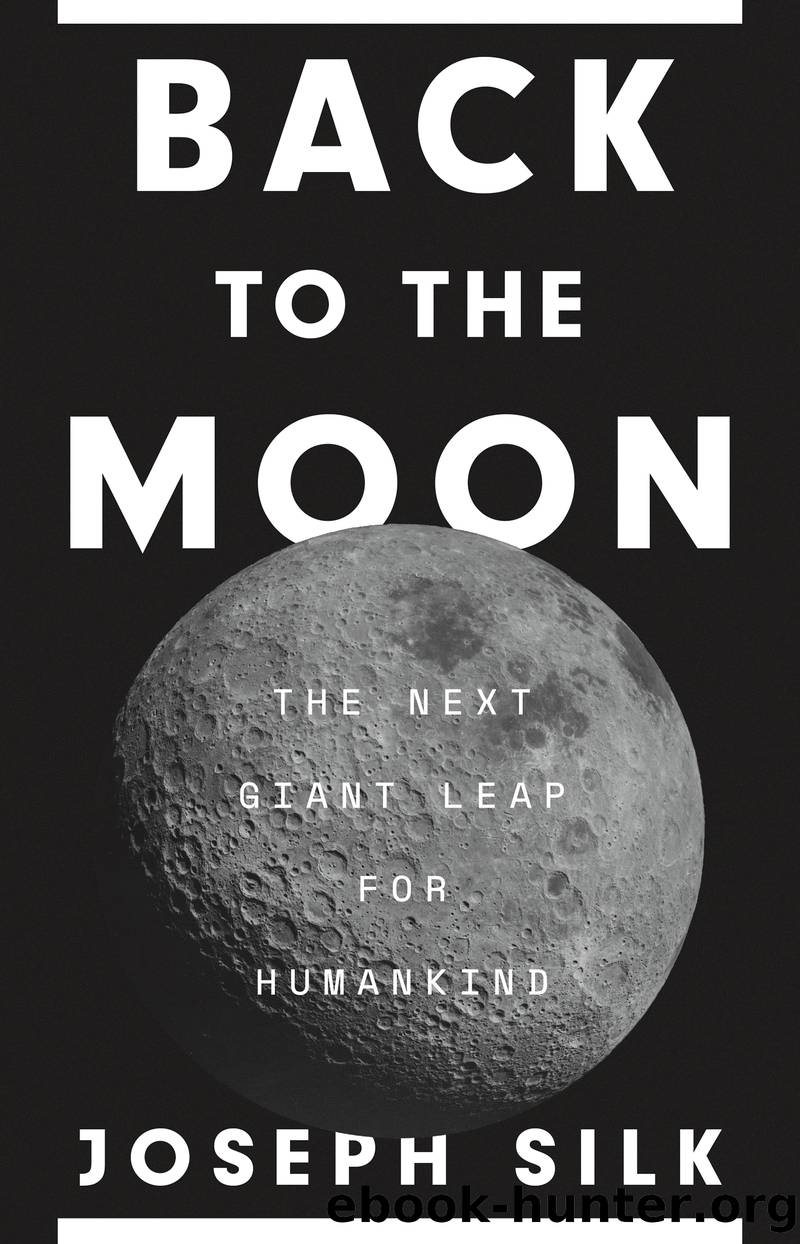Back to the Moon: the Next Giant Leap for Humankind by Joseph Silk

Author:Joseph Silk
Language: eng
Format: epub
Publisher: Princeton University Press
Published: 2022-07-21T00:00:00+00:00
Exoplanets
Even if life tracers, such as microbial fossils, were found by our future missions to Mars or Europa, this does not really inform us definitively about the ubiquity of life. There is too great a risk of terrestrial pollution. After all, a few terrestrial meteorites have been identified as having a Martian origin.
We need to search farther afield than the solar system. Observations made primarily with the Kepler space telescope have shown that for every cool dwarf star in the Milky Way, there is a significant chance of finding at least one Earth-sized planet orbiting its so-called habitable zone. The habitable zone is the âGoldilocksâ region that allows liquid water to exist on the planetâs rocky surface because the planet is neither too far from the star, where itâs too cold, nor too close, where itâs too hot.2
Adding possible options as we extrapolate the Kepler statistics, we arrive at an expectation of more than a billion such Earth-like planets in our Milky Way galaxy. And adding M-dwarfs as likely exoplanet hosts sends this number through the roof. The Kepler telescope search statistics alone uncover thousands of promising exoplanets that are the closest and the easiest to study. Perhaps something interesting is lurking in this hordeâunless, that is, the probability is exceedingly low that a habitable-zone planet would develop a technologically capable species of life. In this case we might need to search a million candidates or more. Even then, we will find no advanced biotracers if life is truly rare.
How rare would life have to be if we are truly alone? We can estimate that life would need to break out less than once on a billion trillion exoplanets. This is just the expected number of terrestrial-like planets in habitable zones in the observable universe. These odds are very low indeed, but perfectly compatible with our ignorance about the origin of life.
But perhaps this line of thinking is too pessimistic. Unless we are very unlucky, it is not unreasonable to conclude that Earthâs humanity should not be the only technological civilization to have ever existed in the Universe. Certainly there has been lots of time. But we must also acknowledge that such advanced entities may be not only really rare, but simply very far away, perhaps beyond our current reach.
Having a chance to answer at least some of these questions is the prime reason why constructing bigger and better telescopes could bring immense rewards. We simply need to look farther afield. Key to our future efforts to extend our reach will be the Moon.
Looking nearby is certainly a useful pilot strategy. To more reliably assess the odds of life existing elsewhere, we desperately need more examples of Earth-like exoplanets. Letâs start with the closest candidate. At a distance of 4.2 light-years from Earth, Proxima Centauri is the Sunâs closest stellar neighbor. It is a red dwarf star, with a mass of only 12 percent of the Sunâs. Its luminosity is 17 percent of the solar luminosity. The habitable zone is consequently much closer to the star than is the case for the Sun.
Download
This site does not store any files on its server. We only index and link to content provided by other sites. Please contact the content providers to delete copyright contents if any and email us, we'll remove relevant links or contents immediately.
| Aeronautics & Astronautics | Astronomy |
| Astrophysics & Space Science | Comets, Meteors & Asteroids |
| Cosmology | Mars |
| Solar System | Star-Gazing |
| Telescopes | UFOs |
Tools of Titans by Timothy Ferriss(8225)
Turbulence by E. J. Noyes(7942)
Secrets of Antigravity Propulsion: Tesla, UFOs, and Classified Aerospace Technology by Ph.D. Paul A. Laviolette(5311)
Astrophysics for People in a Hurry by Neil DeGrasse Tyson(5134)
Room 212 by Kate Stewart(5041)
Design of Trajectory Optimization Approach for Space Maneuver Vehicle Skip Entry Problems by Runqi Chai & Al Savvaris & Antonios Tsourdos & Senchun Chai(5012)
Pale Blue Dot by Carl Sagan(4917)
The David Icke Guide to the Global Conspiracy (and how to end it) by David Icke(4629)
A Journey Through Divination and Astronomy by Publishing Pottermore(4344)
Goodbye Paradise(3729)
Apollo 8 by Jeffrey Kluger(3639)
COSMOS by Carl Sagan(3559)
Losing the Nobel Prize by Brian Keating(3499)
The Five People You Meet in Heaven by Mitch Albom(3476)
How to Read Water: Clues and Patterns from Puddles to the Sea (Natural Navigation) by Tristan Gooley(3410)
Brief Answers to the Big Questions by Stephen Hawking(3369)
How to Read Nature by Tristan Gooley(3251)
The Order of Time by Carlo Rovelli(3145)
A Brief History of Time by Stephen Hawking(2962)
